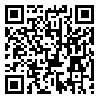Volume 2, Issue 3 (12-2016)
J Sport Biomech 2016, 2(3): 5-14 |
Back to browse issues page
Download citation:
BibTeX | RIS | EndNote | Medlars | ProCite | Reference Manager | RefWorks
Send citation to:



BibTeX | RIS | EndNote | Medlars | ProCite | Reference Manager | RefWorks
Send citation to:
Yazdani S, Farahpour N, Habibi M, Saba M S. Spatiotemporal Variables of Gait in Patients with Adolescent Idiopathic Scoliosis and Healthy Individuals. J Sport Biomech 2016; 2 (3) :5-14
URL: http://biomechanics.iauh.ac.ir/article-1-131-en.html
URL: http://biomechanics.iauh.ac.ir/article-1-131-en.html
1- Faculty of physical education and sport science, University of Tabriz, Tabriz, Iran.
2- Faculty of physical education and sport science, Bu Ali Sina University, Hamedan, Iran.
3- Department of clinical health psychology, Shahid Beheshti University, Tehran, Iran.
4- Department of Pediatrics, University of medical sciences of Hamedan, Hamedan, Iran.
2- Faculty of physical education and sport science, Bu Ali Sina University, Hamedan, Iran.
3- Department of clinical health psychology, Shahid Beheshti University, Tehran, Iran.
4- Department of Pediatrics, University of medical sciences of Hamedan, Hamedan, Iran.
Abstract: (7330 Views)
Objective: The effects of scoliotic deformity on the biomechanics of gait are not clear. The aim of this study was to compare the spatiotemporal variables during gait in adolescent idiopathic scoliosis and healthy individuals.
Methods: Eighteen healthy adolescent girls and 19 adolescent patients with idiopathic scoliosis that were matched for age, height, mass and BMI participated in this study. Using a Vicon motion analysis system (100 Hz), subjects’ gait were recorded and spatiotemporal variables including velocity, cadence, stride and step length, initial heel contact and toe off instants (% of gait cycle), duration of single and double supports, duration of the steps and strides of the right and left feet as well as the asymmetry indices (AI) for all variables were evaluated. ANOVA was run at a significance level of p<0.05 to analyze the data.
Results: It was found that the cadence, velocity, stride and step length, stride and step time, duration of double support and single support, and heel contact and toe off instants were similar in both groups (p>0.05). Also, there were not any between group differences in asymmetry indices for all variables (p>0.05).
Conclusion: spatiotemporal variables in right thoracic scoliotic patients were similar to healthy individuals; there for, it could be suggested that scoliosis does not affect the spatiotemporal variables. Other biomechanical parameters should be examined for etiology of scoliosis.
Methods: Eighteen healthy adolescent girls and 19 adolescent patients with idiopathic scoliosis that were matched for age, height, mass and BMI participated in this study. Using a Vicon motion analysis system (100 Hz), subjects’ gait were recorded and spatiotemporal variables including velocity, cadence, stride and step length, initial heel contact and toe off instants (% of gait cycle), duration of single and double supports, duration of the steps and strides of the right and left feet as well as the asymmetry indices (AI) for all variables were evaluated. ANOVA was run at a significance level of p<0.05 to analyze the data.
Results: It was found that the cadence, velocity, stride and step length, stride and step time, duration of double support and single support, and heel contact and toe off instants were similar in both groups (p>0.05). Also, there were not any between group differences in asymmetry indices for all variables (p>0.05).
Conclusion: spatiotemporal variables in right thoracic scoliotic patients were similar to healthy individuals; there for, it could be suggested that scoliosis does not affect the spatiotemporal variables. Other biomechanical parameters should be examined for etiology of scoliosis.
Type of Study: Applicable |
Subject:
Special
Received: 2014/10/1 | Accepted: 2015/01/16 | Published: 2017/09/14
Received: 2014/10/1 | Accepted: 2015/01/16 | Published: 2017/09/14
| Rights and permissions | |
 |
This work is licensed under a Creative Commons Attribution-NonCommercial 4.0 International License. |





